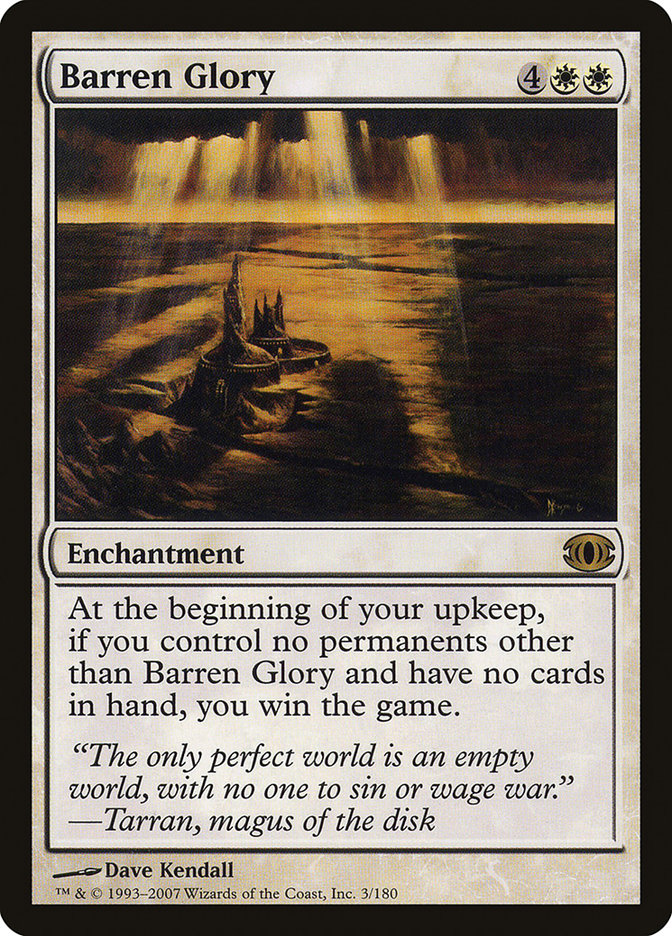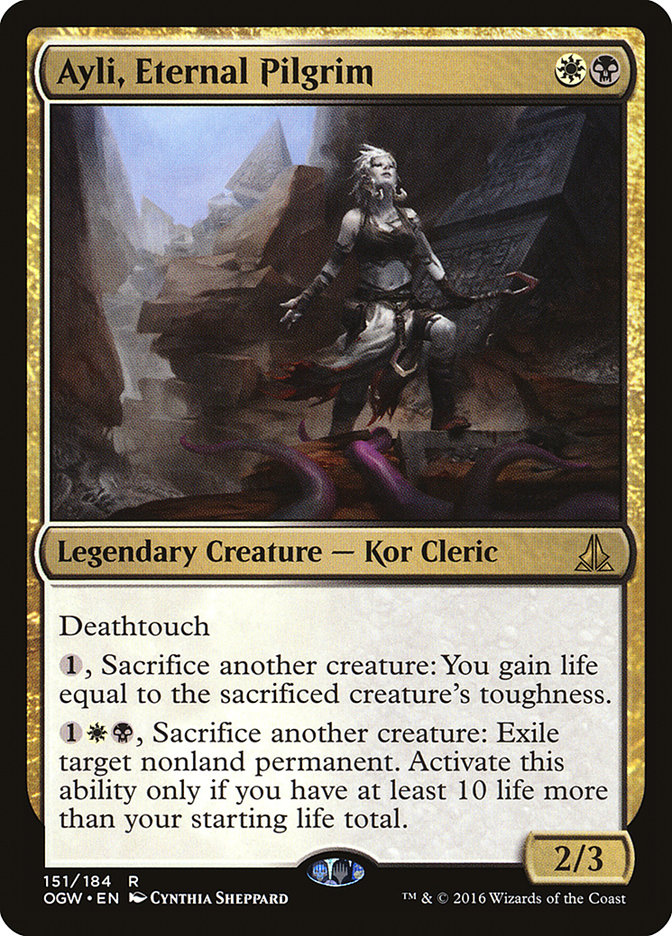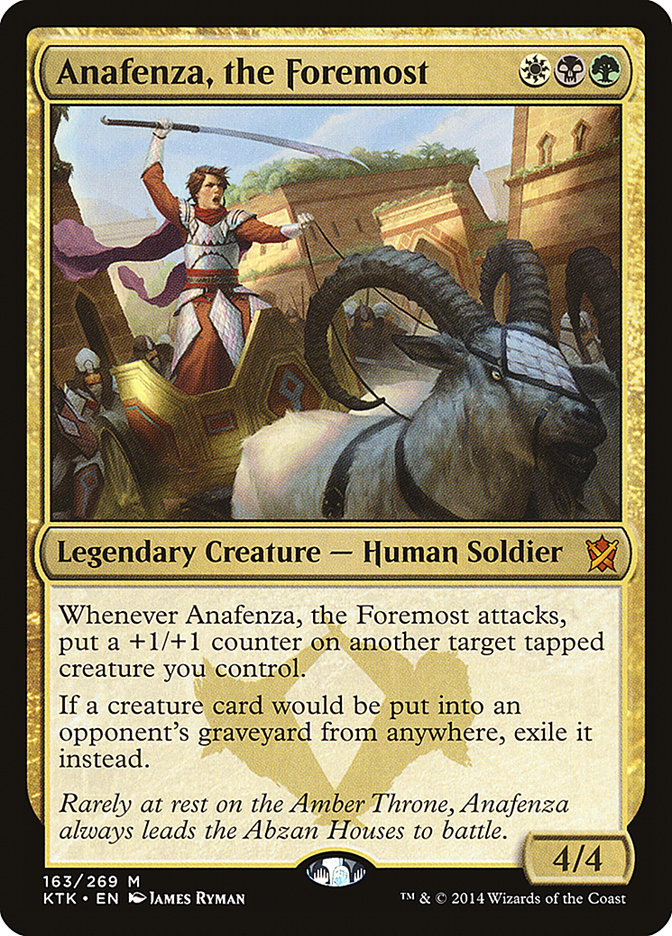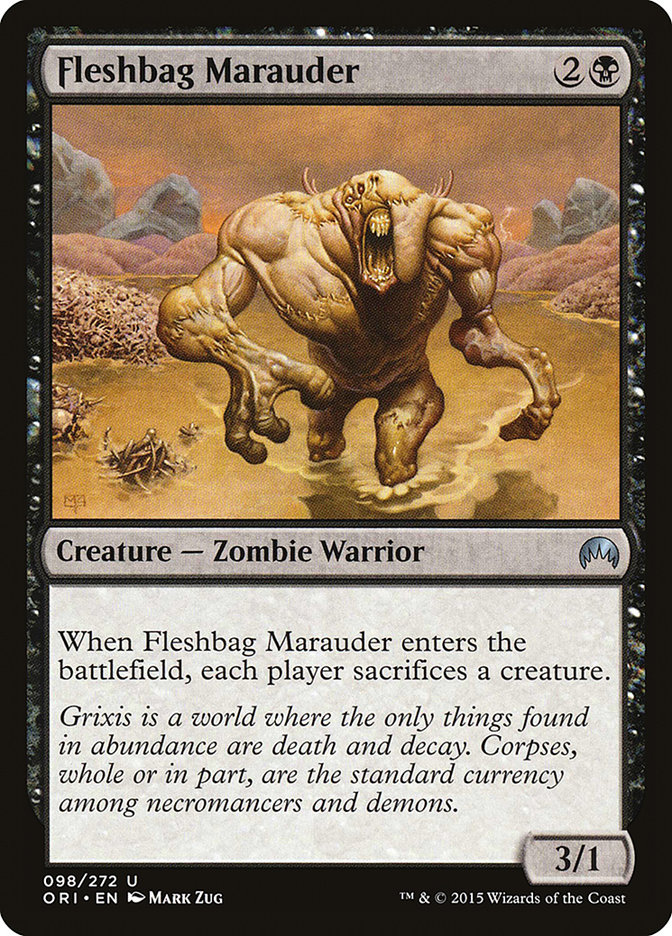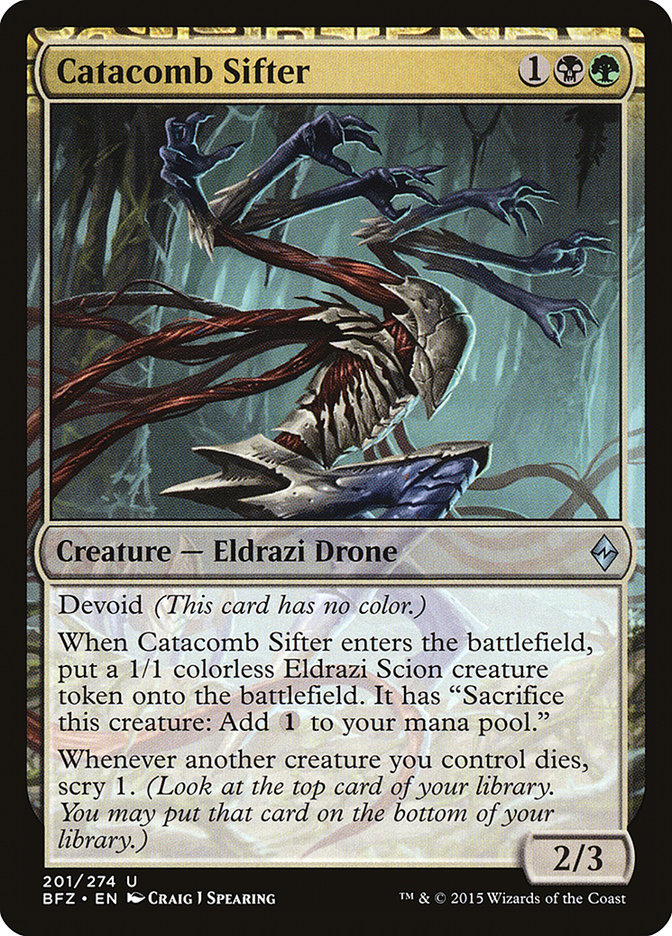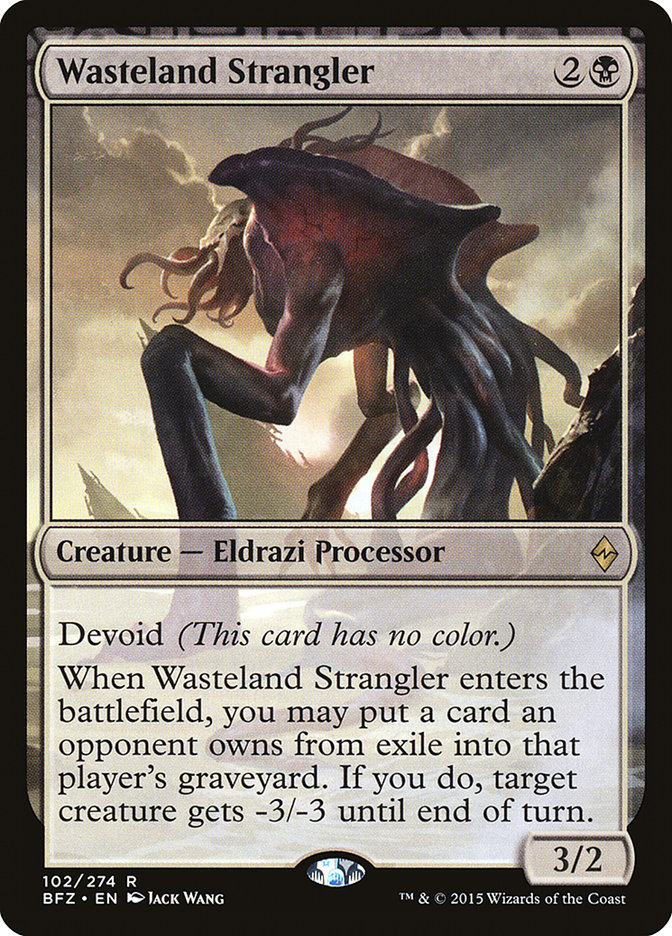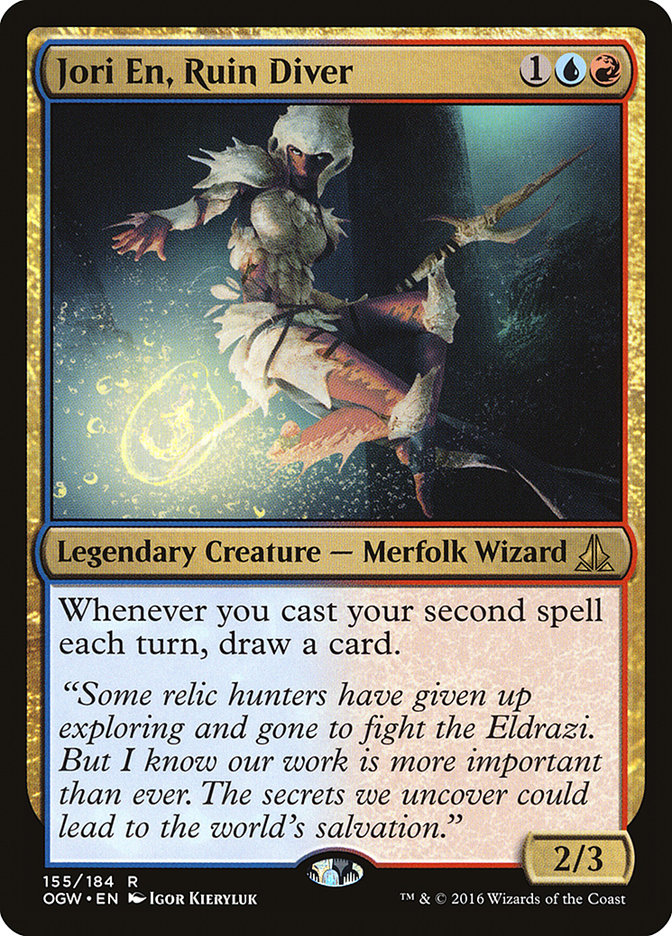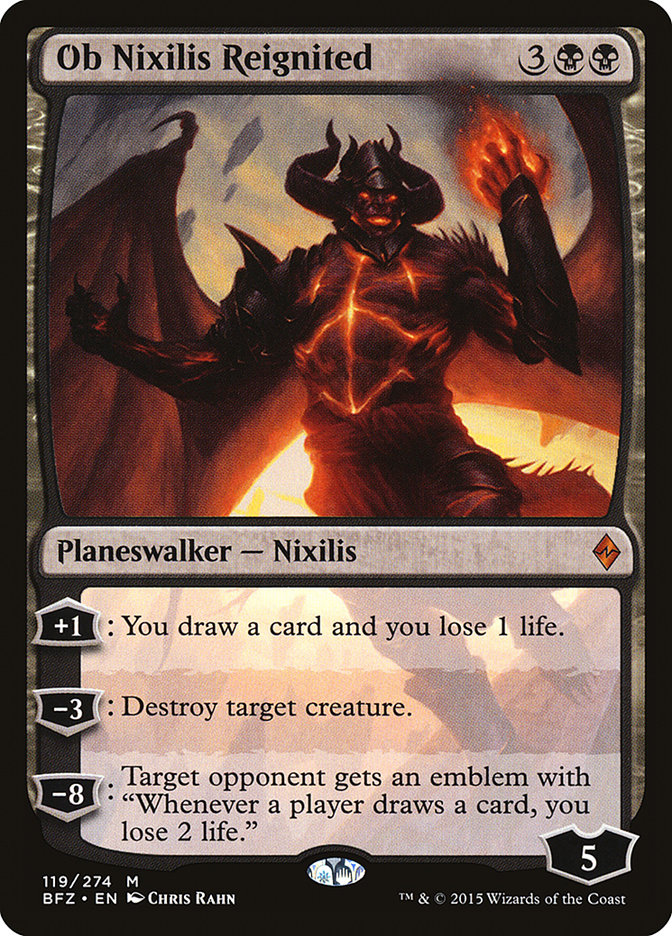This weekend I won the Super Sunday Series Championship.
In an interview afterward, I was reminded that since “going pro,” I haven’t really won any tournaments. Ten years ago, I won tournaments fairly often. I won a couple of “Block Constructed Championship” tournaments at Gen Con, an old tournament called the Midwest Masters Series, a handful of PTQs, stuff like that. These days, I rarely get to play in anything other than Pro Tours and Grand Prix, and those things are just hard to win.
I think most pros just accept that success isn’t measured in hardware, even the ones who say they’re all about the trophy. I think they understand that at the end of the day, it’s just about slowly earning points and some money, and that a pro career is made on solid finishes, rarely on actual victories. There may be exceptions, but my career certainly isn’t one of them.
I’ve stopped going into tournaments looking to win. I’m just trying to do well. Every now and then I can get into the mood where I really want to finally win a Grand Prix, but it takes some effort, and it’s not really how I naturally think about things.
I didn’t really expect to win the Super Sunday Series Championship. I hadn’t even really considered the possibility. In hindsight, I think I would have been a solid pick for the favorite to win the tournament. I may not have been the best player there, but I don’t know of anyone in the tournament who’d actually drafted this very new set more than I had, and it was mostly a Limited tournament, so that gave me a pretty big edge over players like Reid Duke, who’d only drafted once before arriving in Seattle.
So anyway, winning is weird, but I think I like it. I know it sounds like I’m making a joke there–of course I like winning, it’s winning, everyone likes that, but there’s actually something to my hesitation. Sometimes, when I’m playing with friends, and I’m way ahead, and they pick up their cards without saying anything, I’ll joke, “Hey, where’d you go? I thought we were playing a game.”
The end of this tournament kind of felt like that. With a small field and only seven rounds of Swiss, I was able to double draw into first seed after starting 5-0, and then I won three matches in the Top 8. Winning a tournament without dropping a match honestly felt too easy, the way that things can have more value if you had to work harder to earn them.
Ironically, more thoroughly earning a victory here makes it feel less valuable, because it feels less hard-fought than if I’d lost early and then had to win out and sweat a tiebreaker lottery that I narrowly won. That would have been a more arduous journey that would’ve made it feel like I’d accomplished something more difficult.
Sorry, I know this is coming off as really arrogant. “Look, I know I won, but, eh, I wish it was more of a challenge.” I really don’t mean to be saying my opponents were bad at Magic and the tournament was too easy–the difference between winning all your matches and winning most of them, even when you’ve prepared really well, is going to come down to variance, and I happened to run well enough here that I had a smooth tournament. I think it’s strange to note that there’s a weird trick of the human mind, or at least of my mind, that happens to value things differently because of that even though it doesn’t make sense, and I figured it might be relatable in some way.
Okay, never mind, I’m over it.
Constructed
Before the first draft, the tournament really started with deck selection. For Standard, I chose to play Four-Color Rally. Specifically, I played:
Creatures (28)
- 4 Nantuko Husk
- 2 Elvish Visionary
- 3 Grim Haruspex
- 3 Sidisi's Faithful
- 4 Jace, Vryn's Prodigy
- 2 Catacomb Sifter
- 4 Zulaport Cutthroat
- 3 Ayli, Eternal Pilgrim
- 3 Reflector Mage
Lands (24)
Spells (8)

Before I’d really thought about it, I asked Justin Cohen what I should play, and he said Rally, and I asked why, and he said it’s so much better now. I hadn’t realized that, so I asked why, and he told me about Ayli, Eternal Pilgrim and Reflector Mage. I was sold immediately.
These two cards do exactly what the deck needed and they’re perfectly positioned for the format. It’s all really absurd how much these cards help this deck, considering what a tight package it already was.
The two most common difficult matchups for Rally were Red Aggro and Abzan Aggro. Against Red Aggro, Ayli is large enough to block all their creatures, forcing them to have a pump spell, and then she still trades with the creature unless it had three or more power and Temur Battle Rage thanks to deathtouch, which basically means you’re getting a two-for-one off your two-drop, assuming your opponent even has the privilege of making that play rather than just getting brick-walled.
On top of that, the ability to sacrifice creatures to gain life is actually huge in that matchup and great in the deck, even though I could really just get into a 2/3 deathtouch for two mana. Ordinarily, the problem with a blocker like Ayli is that they’d just use a removal spell and keep attacking, but the primary removal spells in red, Wild Slash and Fiery Impulse, only do two damage at the beginning of the game, so even that doesn’t work.
Reflector Mage has the same perfect stat line of 2/3. It doesn’t have deathtouch, so it won’t always get a two-for-one against a pump spell, but all of their creatures have two or less power, so two power still gets you most of the way there. On top of that, the bounce ability’s great. Normally, I’d be pretty down on sorcery-speed bounce against one-mana haste creatures, but the deck is full of tokens, which it just kills, and when you bounce a Monastery Swiftspear it can’t be replayed the next turn, which buys you a ton of time to stabilize the board.
Against Abzan Aggro, again, both creatures are perfect, but for different reasons. Rally’s combo finish is strong and reliable enough that it has inevitability against almost every opponent. Abzan certainly isn’t an exception, so they need to be in the business of getting you dead. The reason Anafenza, the Foremost, is the most important card in the matchup isn’t just that it turns off all your “dies” triggers and your recursion, it’s that it puts you on a fast clock at the same time. Without that clock, you can just sit around and find an answer, and that’s where Ayli, Eternal Pilgrim comes in. Here Ayli’s two power shines, staying under Abzan Charm, while deathtouch means that it still takes out an Anafenza. Because Anafenza’s static ability is so important, trading it for an Ayli is almost never acceptable, which means the two creatures just sit and stare at each other, and that’s just fine for the Rally deck.
I mentioned trying to find an answer, which, of course, is where Reflector Mage comes in. Reid Duke had Fleshbag Marauders in his deck to kill Anafenza, but that doesn’t always work. With Reflector Mage, you can bounce Anafenza, the Foremost, and then your opponent is helpless for a turn, during which you get to untap and use all of your mana while your graveyard is fully functional. Usually, this means you can use Reflector Mage right before you’re ready to Rally the Ancestors back a lethal board.
On top of all this, the real kicker is that each of these creatures has three toughness, coming in the same set at Flaying Tendrils, which initially read as a huge hoser for this kind of strategy. In reality, a huge portion of your creatures just naturally live through it, and if you have a way to sacrifice the others, it just doesn’t really matter. In the end, the card ends up barely being better than anything else.
Understanding how great these would be for the deck, the trick was figuring out what to cut for them without disrupting the core of the deck. This is where I needed some more help from Justin and Matt Severa. They’d both played the deck at Grand Prix Oakland and offered some feedback on which creatures were least essential (specifically, they felt that Catacomb Sifter was less important than I’d assumed). I knew that I wanted to keep the curve as similar to where it had been as possible, and I also knew that I had to be careful about how the new creatures would affect sequencing my land fetches.
The result was a sharp move away from green. Before, there were only four white cards in the deck. Now, there were ten. Adding more white cards actually helps the mana somewhat, as getting white mana early to cast your spells makes it easier to get two white mana sources to cast Rally the Ancestors, and in a deck that isn’t red, maximizing white and blue is nice because it’s hard to avoid having those colors due to the nature of your fetch and battle lands, while green and black can be a little trickier.
I can imagine moving further away from green, as the mana gets a lot easier if you never need green before turn 4 for Collected Company, or even if you just never need it until turn 3 for Catacomb Sifter, but I was afraid of making a change as radically as cutting all of any given card without further testing. I did take advantage of moving away from green in the tournament. 1/1 creatures are bad against Abzan, as they don’t match up well against any of their creatures, so it made sense to me to side out both Elvish Visionary and Catacomb Sifter against them, which made fetching much easier in post-sideboard games. That’s a very real asset.
As I mentioned, due to my strong start in the tournament, I only got to play two matches with my Standard deck. Before the tournament, I’d imagined that I might write about my first foray into the new Standard environment, but with only two matches played, that just feels silly. I think this was definitely the best first-week deck. It’s relatively streamlined and tested, but with enough new tools to catch people who haven’t thought about it by surprise and really take advantage of matchups the new cards have turned around.
Moving forward, as people have more time to adjust to its new strength and the kinds of things it does now, and more time to tune their new decks, I’m optimistic that we’ll get to the point where it stops being the best deck in Standard, but I can’t say I’m confident that it’ll go that way. Everything it’s doing is just that good.
Limited
As for the rest of the tournament, I had some weird drafts. In both drafts, I started out trying to draft W/B Allies by starting with removal, but Allies just weren’t there. In the first draft, I first-picked an Isolation Zone and then didn’t see another white card in the pack. I moved into black, but that dried up and I started taking colorless/five color lands, and then ended up taking one card of every other color, including colorless in Spatial Contortion, in the rest of the first pack.
In the second pack I opened another Spatial Contortion, which I was well-positioned to play, and then got passed an Eldrazi Displacer, a card that’s generally hard to use because no other white card has any interest in colorless mana. Since I happened to be devoid anyway, with some interest in having white for Isolation Zone, it was perfect for me. After opening a Stasis Snare in the third pack and getting passed a Wasteland Strangler, I ended up with a solidly W/B Devoid deck splashing red for Valakut Invoker and Cinder Hellion with a lot of removal and no real creature synergies. As it happens, a lot of removal and Valakut Invoker is a pretty good place to be in this format, so I was able win all my rounds despite having an unconventional deck and a lot of very close games and matches.
The second draft went far better. I opened Oblivion Strike and got passed Cliffhaven Vampire and Vampire Envoy, two cards I like in an archetype I like, but then things took a turn in the next pack when there were no playable white or black cards. I’d passed a lot of good Red and Blue cards at this point, including a Jori En, Ruin Diver, so I wanted to avoid those if possible, but more importantly, there was a Nissa’s Judgment in the pack, which was clearly the best card, so I took that. From there, I mostly saw green cards, black cards, and good colorless lands, and at the end of the pack I picked up a Submerged Boneyard just in case.
As it happened, “just in case” came through with a fifth-pick Deepfathom Skulker in pack two and I settled into G/B splashing blue, white, and colorless activations with seven nonbasic lands. Oh, and I opened an Ob Nixilis Reignited, which played a critical role in my quarterfinal and final matches.
Moving Forward
The weekend overall was great. I got to draft far more than I have at any tournament in years, which, with Grand Prix Vancouver and Pro Tour Oath of the Gatewatch coming up, is exactly what I wanted to do, and I got to see a lot of good friends at Wizards of the Coast. Best of all, I’m now qualified to do it all again next year!


